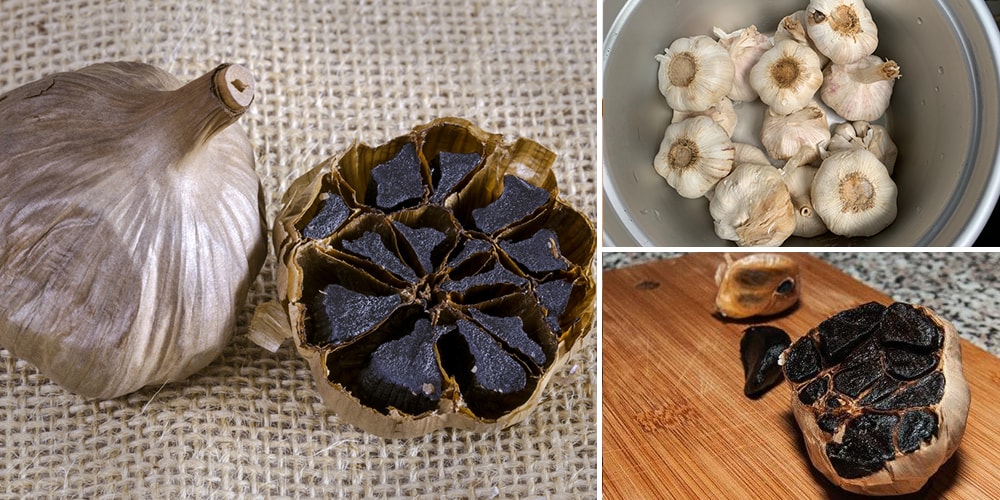
Homemade Black Garlic
Black garlic is often described as “fermented,” but its transformation is more akin to slow-roasting. And it’s even more potent than regular garlic. Check out the reasons why you should make homemade black garlic right now!
Health Benefits of Black Garlic
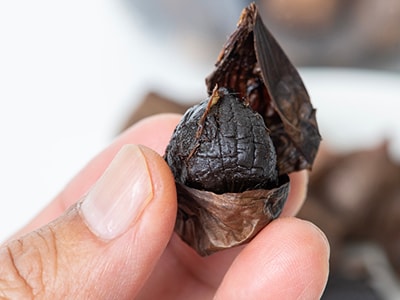
Unlike raw garlic, black garlic possesses a milder and less pungent flavor. It acquires a delightful sweetness akin to aged balsamic vinegar, accompanied by subtle sweet and sour notes. Some individuals may detect a slight bitterness in its taste. The flavor is influenced by factors such as the type of garlic used, roasting duration, and aging process.
Incorporating black garlic into your daily routine can offer numerous health benefits beyond those of regular garlic. Its consumption is easier for some individuals compared to raw garlic. Here are a few reasons why you should consider including black garlic in your diet:
- Strong antiviral properties
- Potent anti-tumor effects
- Powerful anti-inflammatory properties
- Enhances “good” HDL cholesterol levels for a healthier heart
- Reduces or prevents allergic responses
- Supports liver health and helps mitigate alcohol-related liver damage
- Aids in the prevention of colon cancer
- Abundant antioxidants (contains approximately 10 times more antioxidants than raw garlic)
⇒ How to Turn This Annoying Plant into a Vein Cleanser (Video)
Homemade Black Garlic Recipe
You can make black garlic in several different ways. The important thing is to keep the garlic reliably at 140 F for a long period. It can be done in a crockpot if you can maintain it at 140 F. In the beginning, I used my crockpot with a temperature regulator that I had made for Sous Vide cooking, But after a bit of experimenting and testing, I discovered that a rice cooker stays at 140 F on the warm setting, so I now use that. The only downside is that it ties up the rice cooker for a long time.
Here are the steps I use to make black garlic in the rice cooker:
- Select fresh, healthy garlic bulbs. Pearly garlic or single clove garlic works well, and some prefer the flavor of purple streaked garlic.
- Clean the garlic, wiping with a damp cloth to remove visible dirt.
- Place the garlic in a rice cooker, using a baking bag or crockpot liner to preserve moisture and contain the garlic smell. If not using a bag, keep the rice cooker in a well-ventilated area to control the strong garlic aroma.

- Close the rice cooker and set it to “Keep Warm” mode, avoiding the “cook” button. Allow the garlic to roast for 2 to 3 weeks, periodically checking that it is still on. Some cookers have an automatic shut-off, so consult your manual.
- After 2 to 3 weeks, check the garlic’s color. Black garlic is ready when it has turned black, but it can be left to roast longer for a deeper flavor. The texture changes as well, starting as soft fruit-like at 2 weeks and gradually becoming chewier over time. The flavor also evolves, resembling molasses with increased roasting duration.
 Once the desired black garlic is achieved, it can be consumed immediately or stored in a sealed container at room temperature for up to 6 months or in the freezer for up to 1 year. Commercial black garlic is typically aged at 70°F with high humidity for 10 to 45 days. Personal preference and local humidity conditions can guide your storage choices.
Once the desired black garlic is achieved, it can be consumed immediately or stored in a sealed container at room temperature for up to 6 months or in the freezer for up to 1 year. Commercial black garlic is typically aged at 70°F with high humidity for 10 to 45 days. Personal preference and local humidity conditions can guide your storage choices.
How to Use Black Garlic
To reap its full health benefits, incorporate black garlic into your daily cooking. It can be used as a substitute for regular garlic, offering a sweeter and milder flavor. You may choose to combine raw garlic and black garlic or increase the amount of black garlic based on your desired taste.
One of the simplest ways to use black garlic is to spread it on bread, crackers, or even as a condiment for sandwiches. Its sweet and savory flavor can add depth to your snacks and appetizers. You can also add black garlic to soups, stews, salad dressings, sauces, rice and even desserts.
Dehydrating Black Garlic for Future Use
To make powdered seasoning, prepare a batch of black garlic with 12 to 14 large cloves. Once soft and easily peeled, spread the cloves slightly on a solid dehydrating sheet or cover the mesh with plastic. After drying, blend the black garlic into a fine powder. This black garlic powder can be used instead of, or in addition to, regular garlic powder.
If you do not wish to prepare black garlic at home, you can purchase it from various sources such as health food stores, Farmer’s markets, specialty food stores, Asian grocery stores, or directly from producers.
The Bottom Line
Various methods exist for making black garlic, but the key is to maintain a consistent temperature of around 140°F or slightly above. Higher temperatures can result in a more bitter flavor and potential loss of beneficial properties. While scientific evidence is limited, personal observations indicate that slower roasting yields the best results. Experimentation and personal preference can guide your approach to making black garlic at home. Let us know in the comments if you’ve tried black garlic before.








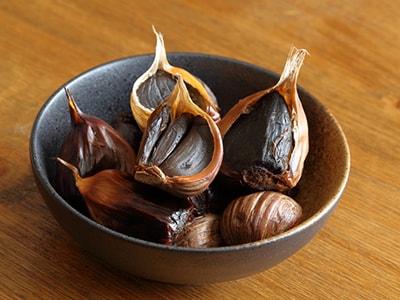
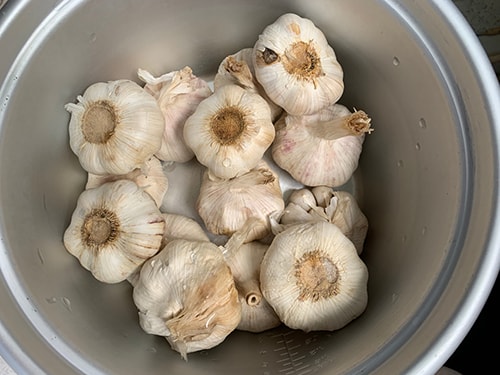
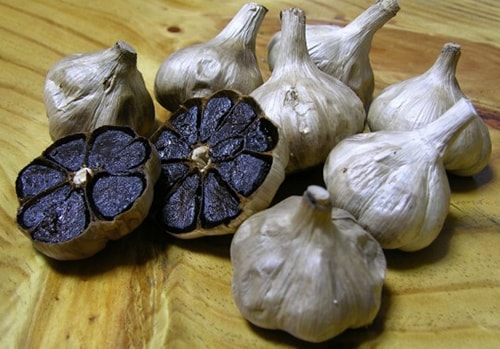 Once the desired black garlic is achieved, it can be consumed immediately or stored in a sealed container at room temperature for up to 6 months or in the freezer for up to 1 year. Commercial black garlic is typically aged at 70°F with high humidity for 10 to 45 days. Personal preference and local humidity conditions can guide your storage choices.
Once the desired black garlic is achieved, it can be consumed immediately or stored in a sealed container at room temperature for up to 6 months or in the freezer for up to 1 year. Commercial black garlic is typically aged at 70°F with high humidity for 10 to 45 days. Personal preference and local humidity conditions can guide your storage choices.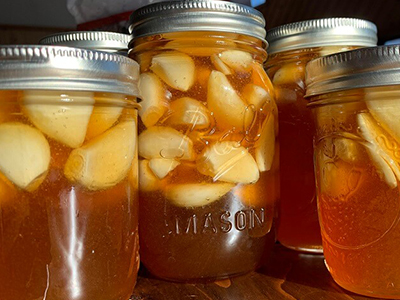
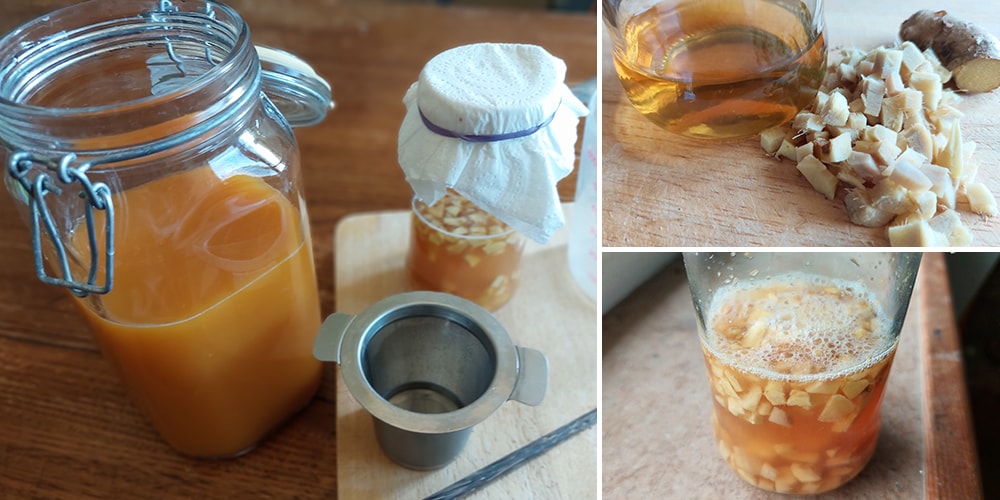
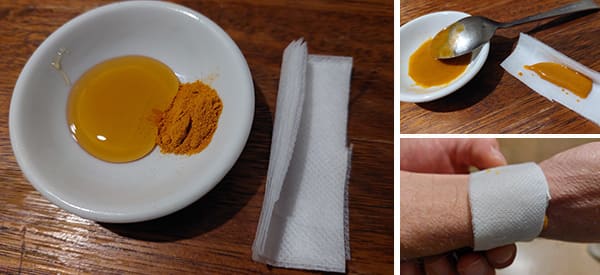
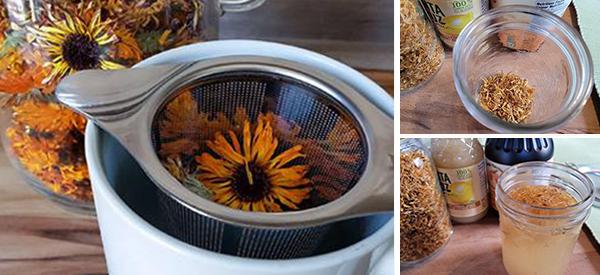
I used to buy black garlic but it’s really expensive so I have started making it using my dehydrator. Wrap each head in greaseproof paper then with aluminium foil to keep it from drying too much. Mine took 5weeks to get to the black stage. Delicious and chewy
Thank you so much!
I wonder if a wax melter would work, I don’t know how hot those get.. I’m the only person in my household so I doubt if I would use much, but at least this would be a cheap experiment (now where did I put the wax melter)
Does powdered black garlic have the same cancer fighting and other health benefits as regular black garlic?
Hi Lisa,
Thank you so much for your question.
Yes, it actually does.
You can add it to pastas, soup, stir-fries and other foods.
We wish you the best of health!
Do you mean if you have hearing loss the black garlic can restore your hearing?
pretty unlikely
I just read that it can help with glaucoma.
I am so glad to see this recipe for Black Garlic! I love it, but the price!!! Would a crock pot work instead of a rice cooker? My crock pot has HIGH, LOW and WARM settings.